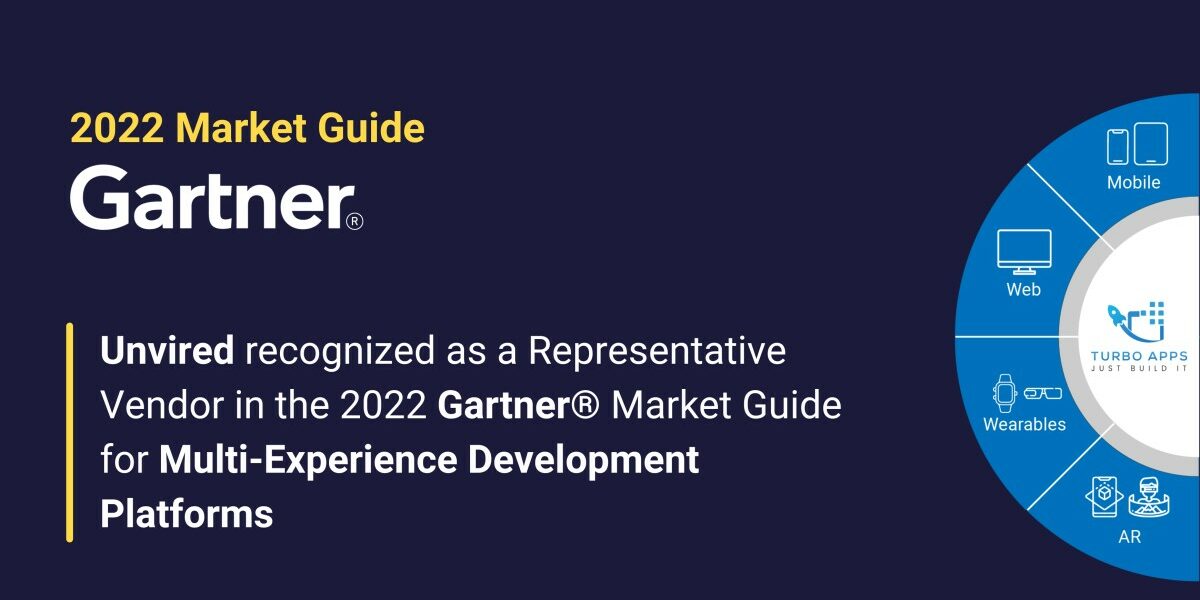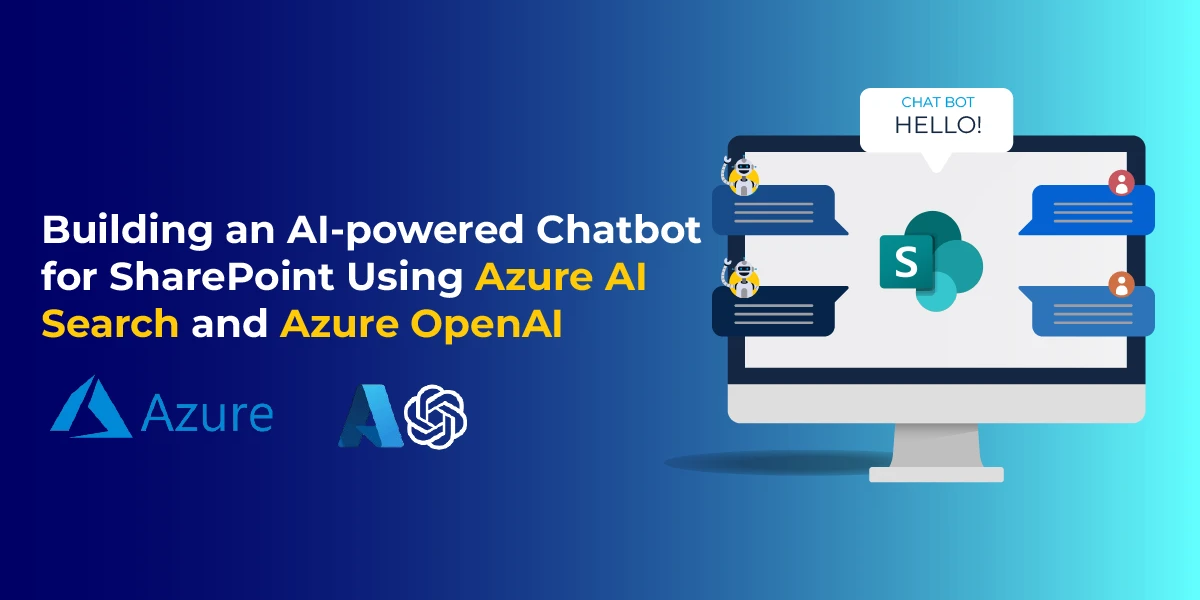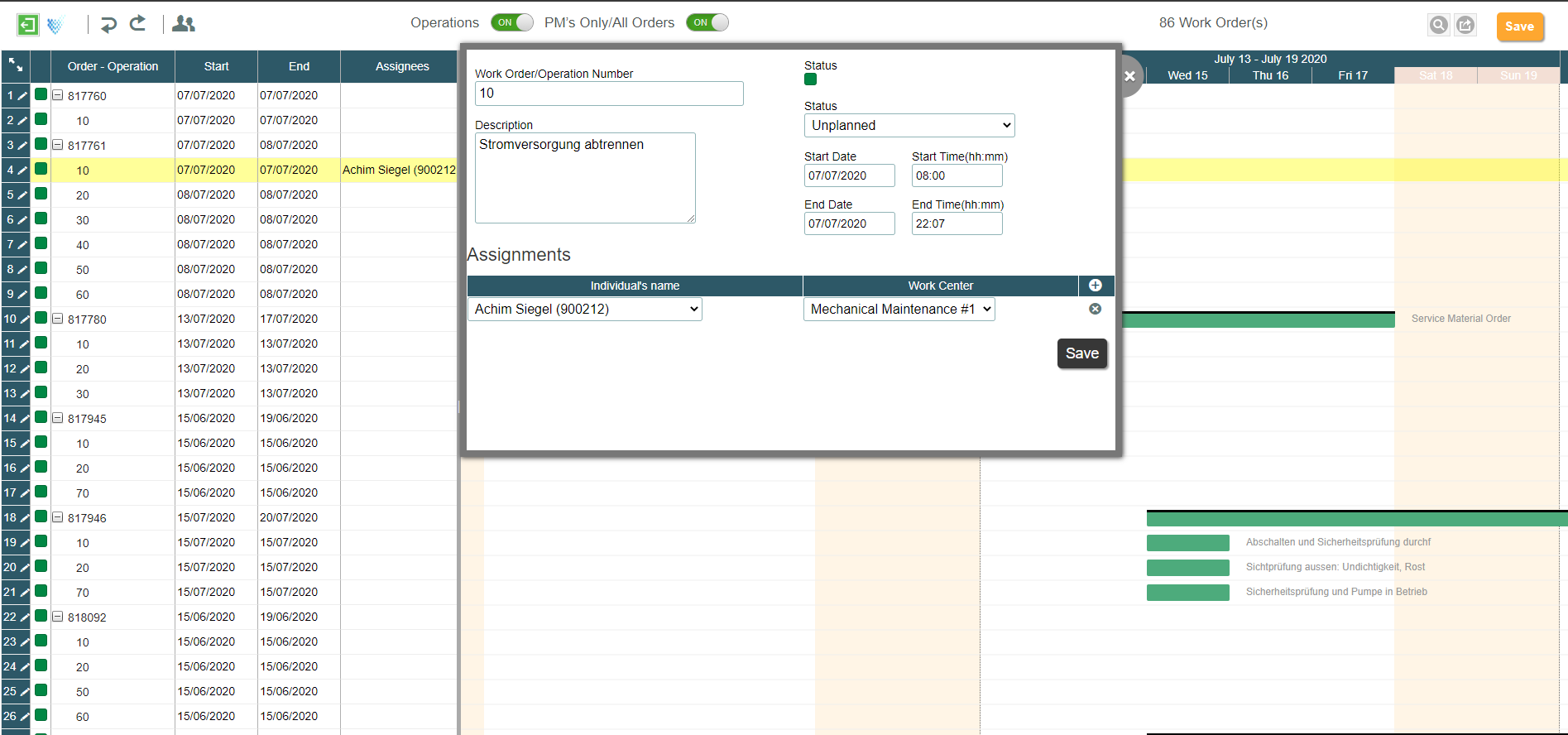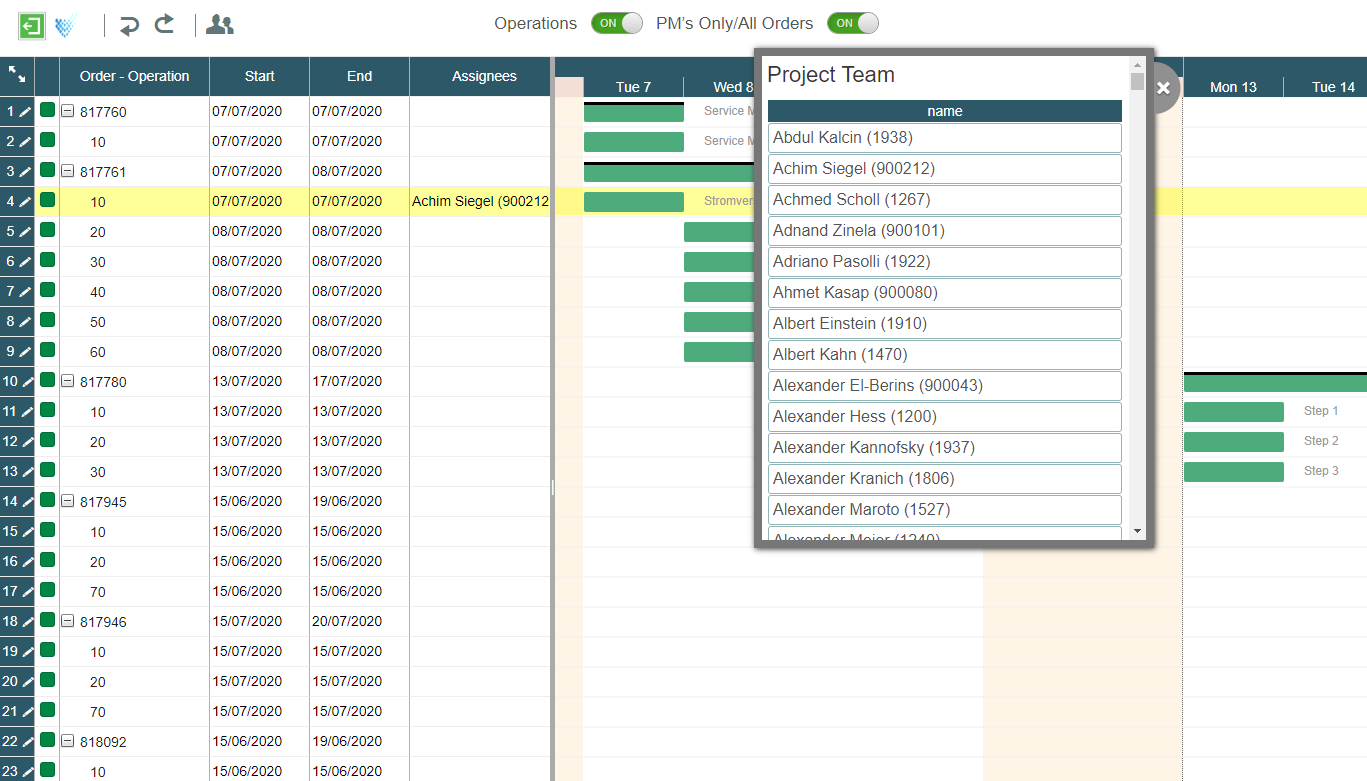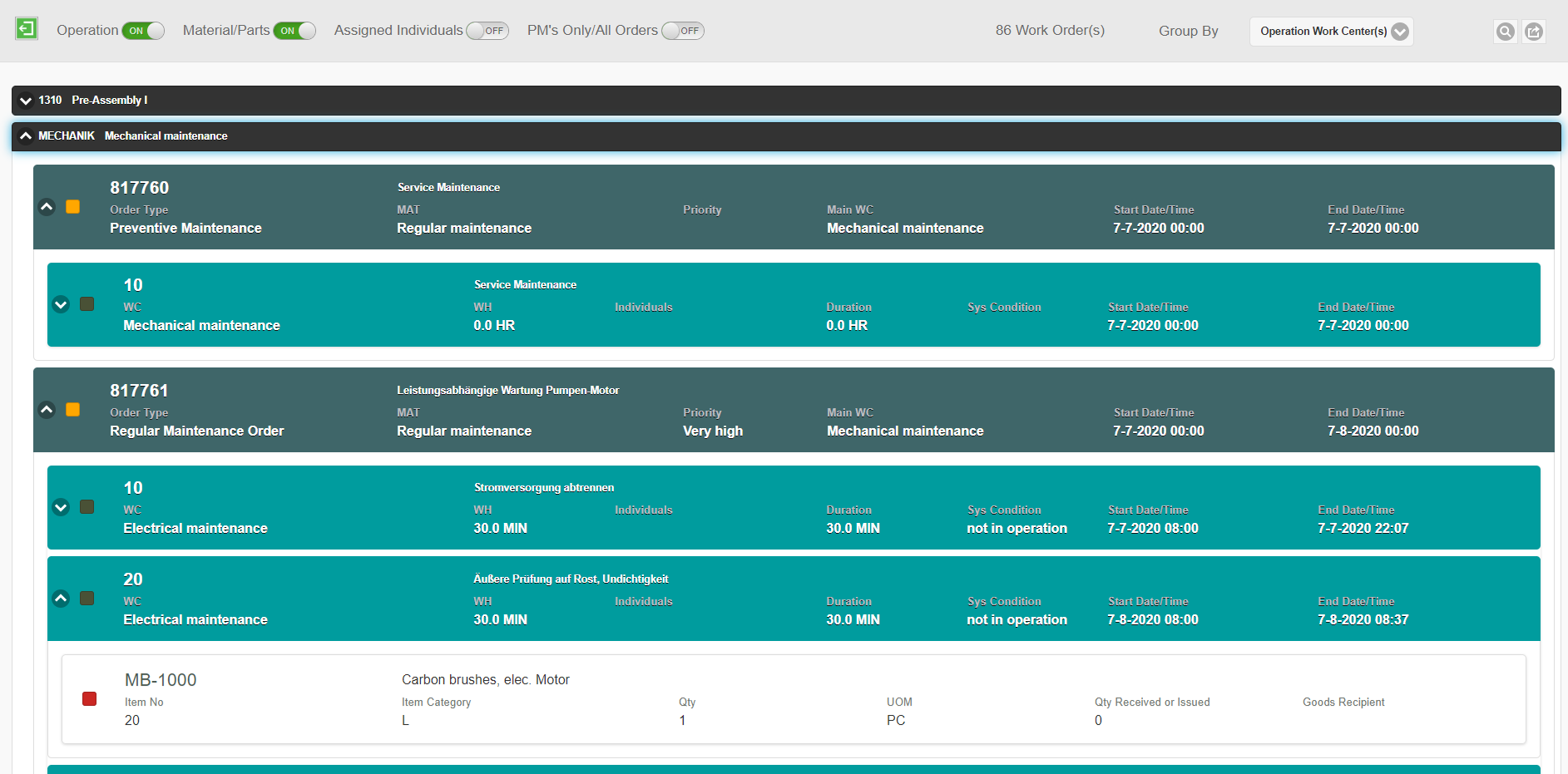Is your organization struggling with employees spending too much time searching for information in SharePoint? Is your enterprise knowledge buried in countless files and folders making it difficult to access and utilize? Have you experienced traditional keyword-based search often falls short, returning irrelevant results or missing insights?
You’re not alone. Knowledge silos are still one of the biggest barriers to productivity in modern workplaces. Despite centralized platforms like SharePoint, locating relevant documents or information can be time-consuming & frustrating.
In this blog, you’ll learn how to solve these challenges by building an AI-powered chatbot using Azure AI Search and Azure OpenAI, transforming your SharePoint data into a conversational knowledge assistant which is fast, scalable, and cost-effective.
Solution Overview:
The solution leverages Microsoft SharePoint, Azure AI Search, and Azure OpenAI to deliver a seamless experience that enables users to retrieve information through natural, conversational interactions—without disrupting your existing infrastructure.
Core Components:
- Microsoft SharePoint: The solution builds upon your existing SharePoint environment that stores your documentation, policies, manuals, reports etc- eliminating the need for data migration. Users gain real-time access to the updated documents while preserving existing security policies and permissions built into your SharePoint environment.
- Azure AI Search: The solution integrates Azure AI Search to deliver intelligent search capabilities that go beyond traditional keyword matching. By implementing both semantic and vector search, the chatbot understands the true intent behind user queries and the contextual meaning of your documents. It comes with pay-as-you-go model which makes it both powerful and cost-effective.
- Azure OpenAI: It brings the power of GPT models into Azure. By combining user queries with relevant SharePoint document fragments retrieved from semantic search, you can implement a Retrieval-Augmented Generation (RAG) pattern—generating relevant, human-readable answers from internal content.
Solution Architecture:
Here’s how the AI chatbot works:
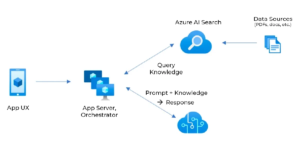
Step-by-Step Guide: Building an AI-powered Chatbot for SharePoint Using Azure AI Search
Now let’s walk you through the steps for developing a SharePoint-powered chatbot using Azure AI Search and Azure OpenAI. The goal is to create a scalable chatbot interface that retrieves information directly from SharePoint content through semantic search and AI-powered responses. This guide focuses on the high-level setup and integration steps.
Step 1: Provision Azure AI Search Service
To get started, you’ll need to provision your Azure AI Search service in the Azure portal. Here’s how:
- Navigate to the Azure portal and create a new Azure AI Search instance.
- Select a pricing tier that aligns with your anticipated indexing and query volume. Azure AI Search offers a range of pricing tiers, from free to paid, so you can choose the one that best fits your needs.
- Record your Search Service Name, Admin API Key, and Endpoint URL; these are essential for later steps.
Step 2: Register Azure AD Application for Secure Access
To securely access SharePoint data, you’ll need to register an Azure AD Application. Here’s how:
- Go to Azure Active Directory > App registrations and create a new application.
- Assign the necessary permissions, such as Sites.Read.All, to access SharePoint Online content.
- Generate a Client ID and Client Secret for authentication.
- Ensure the application has admin consent for the required permissions.
Step 3: Connect SharePoint as a Data Source
Azure AI Search supports SharePoint as a data source via the Microsoft Graph connector. Here’s how to connect your SharePoint site:
- Within your Azure AI Search resource, navigate to Data Sources and create a new one.
- Choose SharePoint Online and provide the authentication details using the Azure AD app you registered.
- Configure the specific SharePoint site and the document libraries or lists you wish to index.
- Alternatively, you can create the data source programmatically by sending a POST request to the Azure Search Data Sources REST API. Include connection credentials and SharePoint site details in the request body. This method is ideal for automation or CI/CD integration.
Step 4: Create an Index
Define the schema for your search data by creating an Index. Here’s how:
- Define fields such as title, content, and path based on the information available in SharePoint.
- Enable semantic capabilities if you plan to leverage cognitive search or AI enrichment features.
- You can create the index via a PUT request to the Azure Search Indexes REST API, specifying field definitions and optional semantic configurations. This provides full control over the index schema and programmatic enablement of semantic search features.
Step 5: Set Up the Indexer
The Indexer links your data source to your index. Here’s how to configure an indexer:
- Configure an indexer to pull data from SharePoint and populate your index.
- Set the indexer to run on a schedule or trigger it manually.
- Monitor the indexer status for any errors to ensure data flows correctly.
- Create an indexer using a PUT request to the Indexers REST API, connecting it to your data source and index. The REST API setup allows programmatic customization of scheduling, skillsets, and error tracking.
Step 6: Enable Conversational Capabilities with Azure OpenAI
Once your data is indexed, integrate conversational AI using Azure OpenAI. Here’s how:
- Utilize Azure OpenAI Service (specifically GPT models) to generate responses based on your indexed content.
- Implement a Retrieval-Augmented Generation (RAG) flow:
- The user’s query is sent to the Azure AI Search index.
- The top matching documents are retrieved.
- These retrieved documents are passed to the OpenAI model as context to generate a relevant answer.
- This process forms the core of your chatbot experience, combining enterprise search with natural language generation.
Conclusion: From Siloed Docs to Conversational Knowledge
With the AI-powered chatbot, you can transform your SharePoint knowledge from siloed docs to conversational, enabling your workplace to become more productive, responsive, and AI-driven. With low development overhead and pay-as-you-go pricing, this is one of the most valuable upgrades you can bring to your digital workplace.
Partner with Unvired
Unvired specializes in building and deploying enterprise-grade solutions that harness the power of AI and automation. Whether you’re starting from scratch or looking to modernize your internal knowledge systems, we can help you build and deploy AI-powered chatbots that integrate seamlessly with SharePoint and Azure, or your existing document management system (DMS). From architecture design to implementation, our team can help you unlock smarter, faster, and more conversational access to your organization’s knowledge base.
Let’s talk about how we can bring intelligent search to your workplace.




